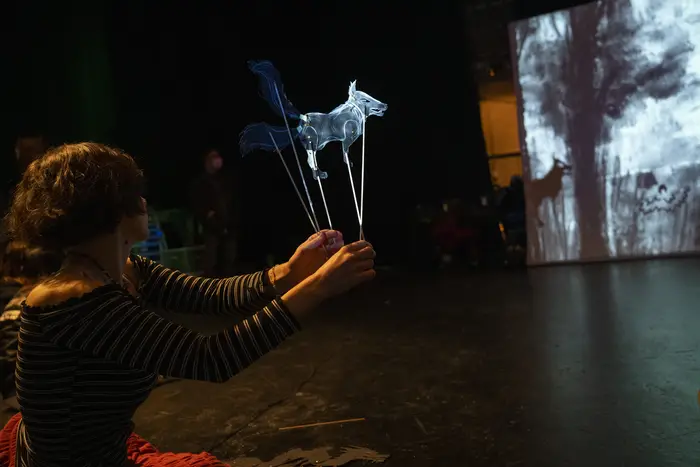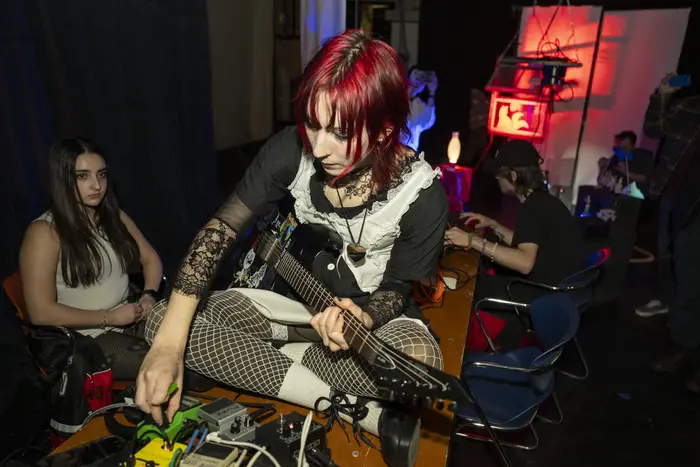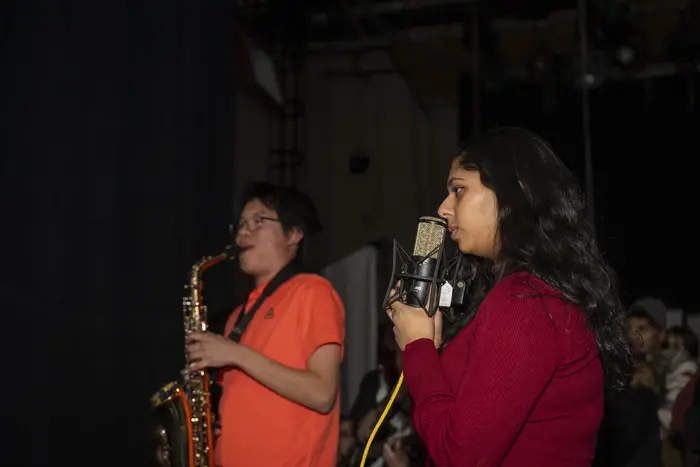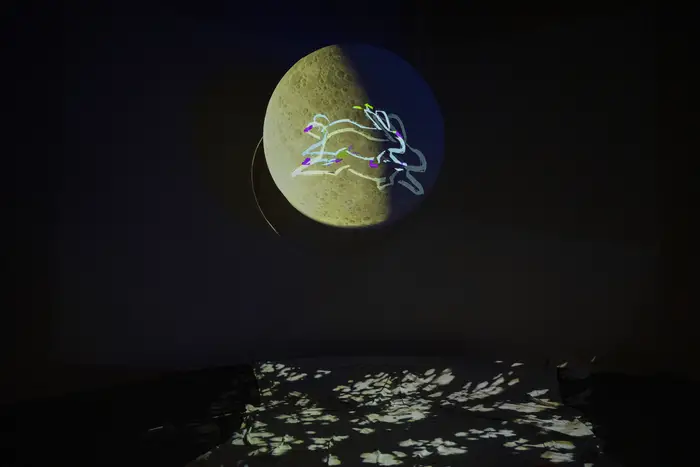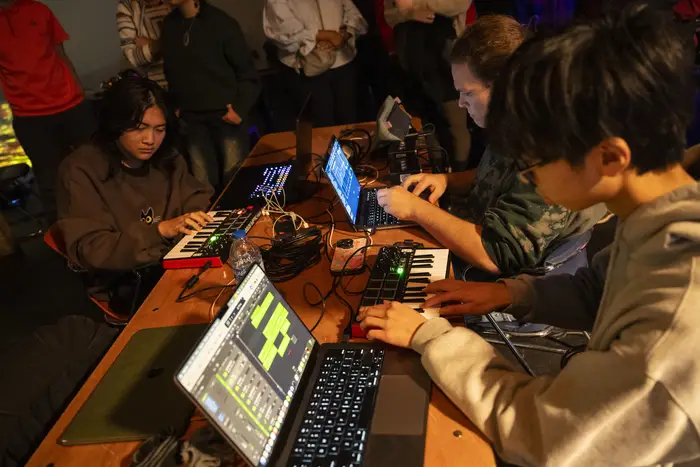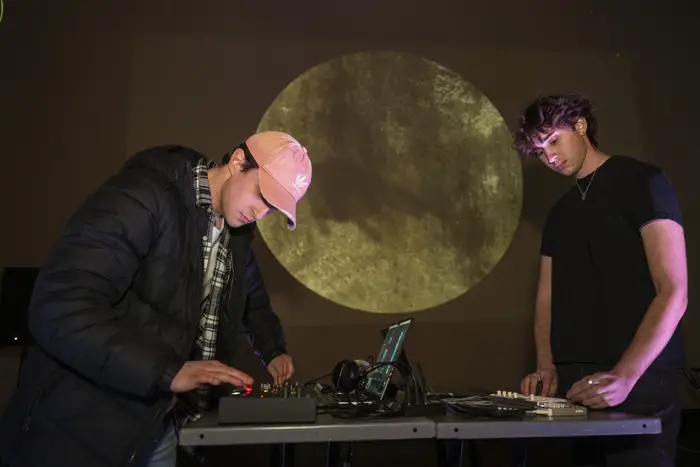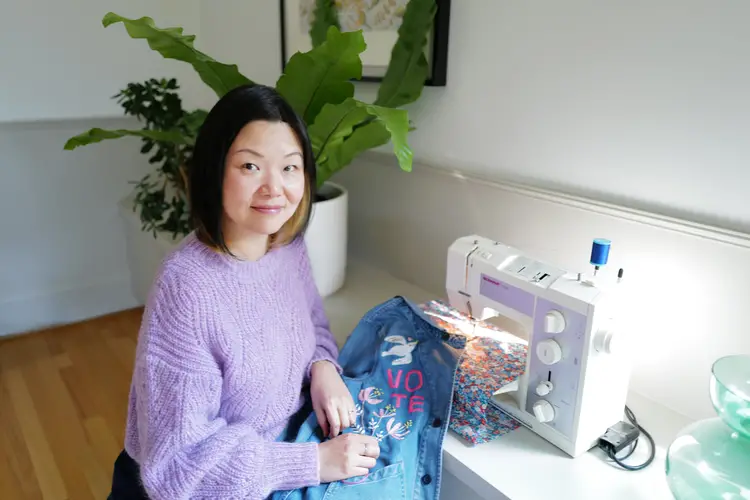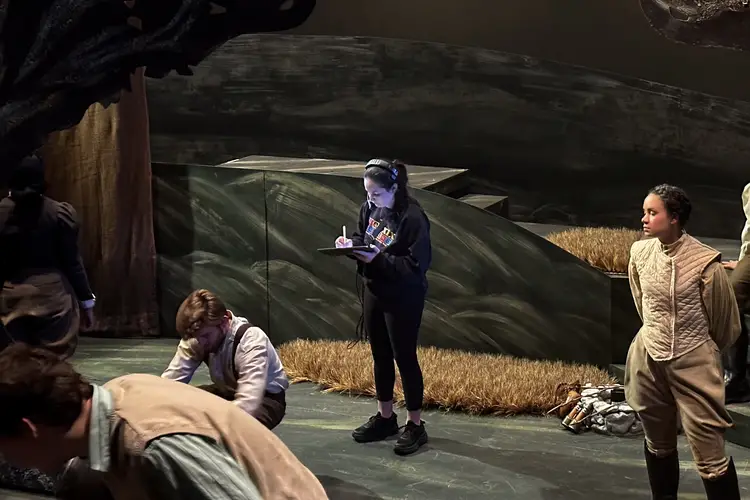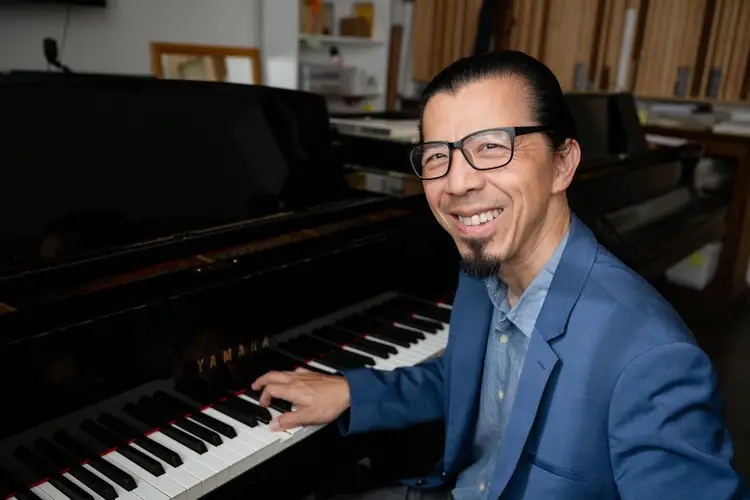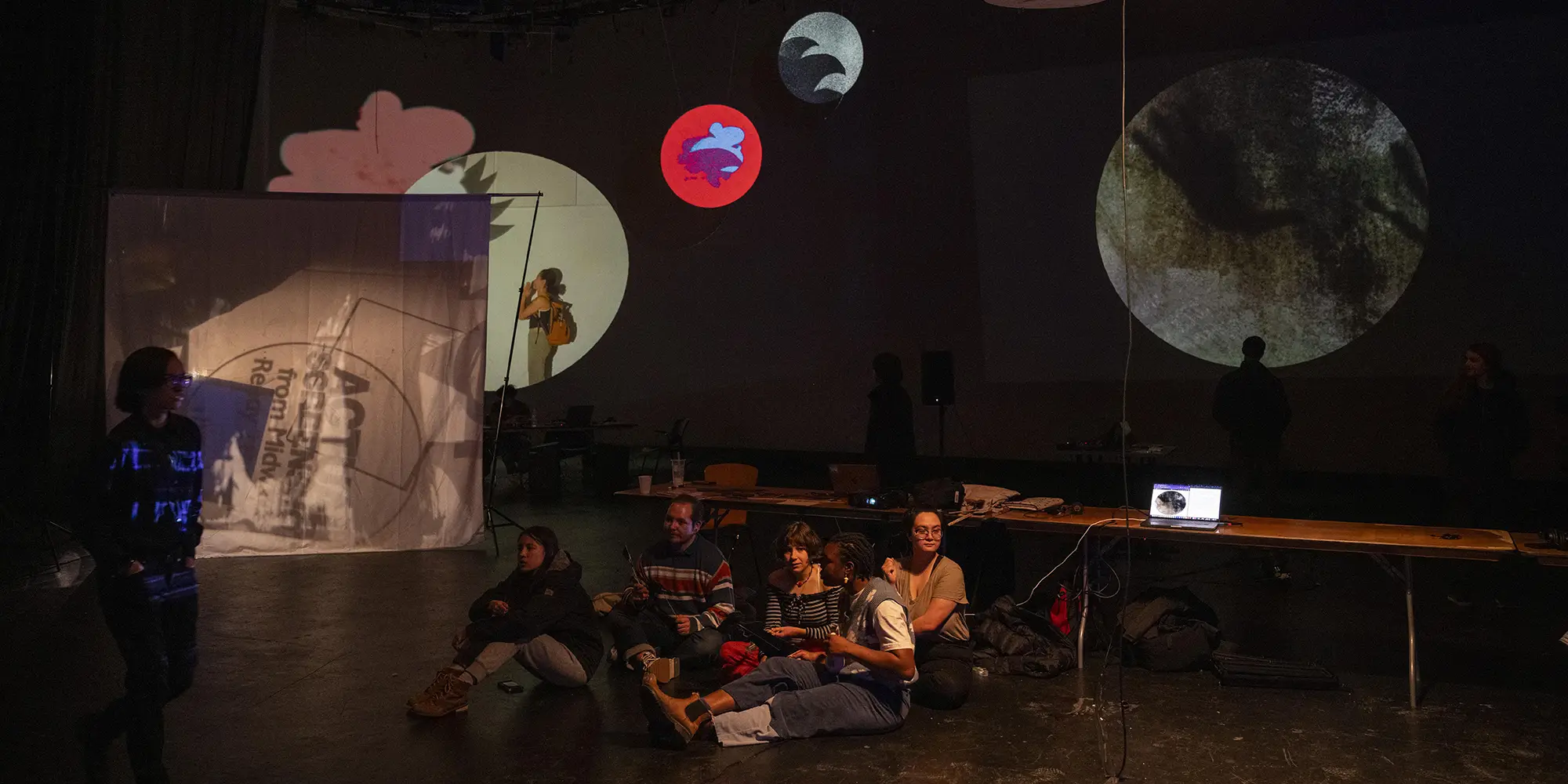
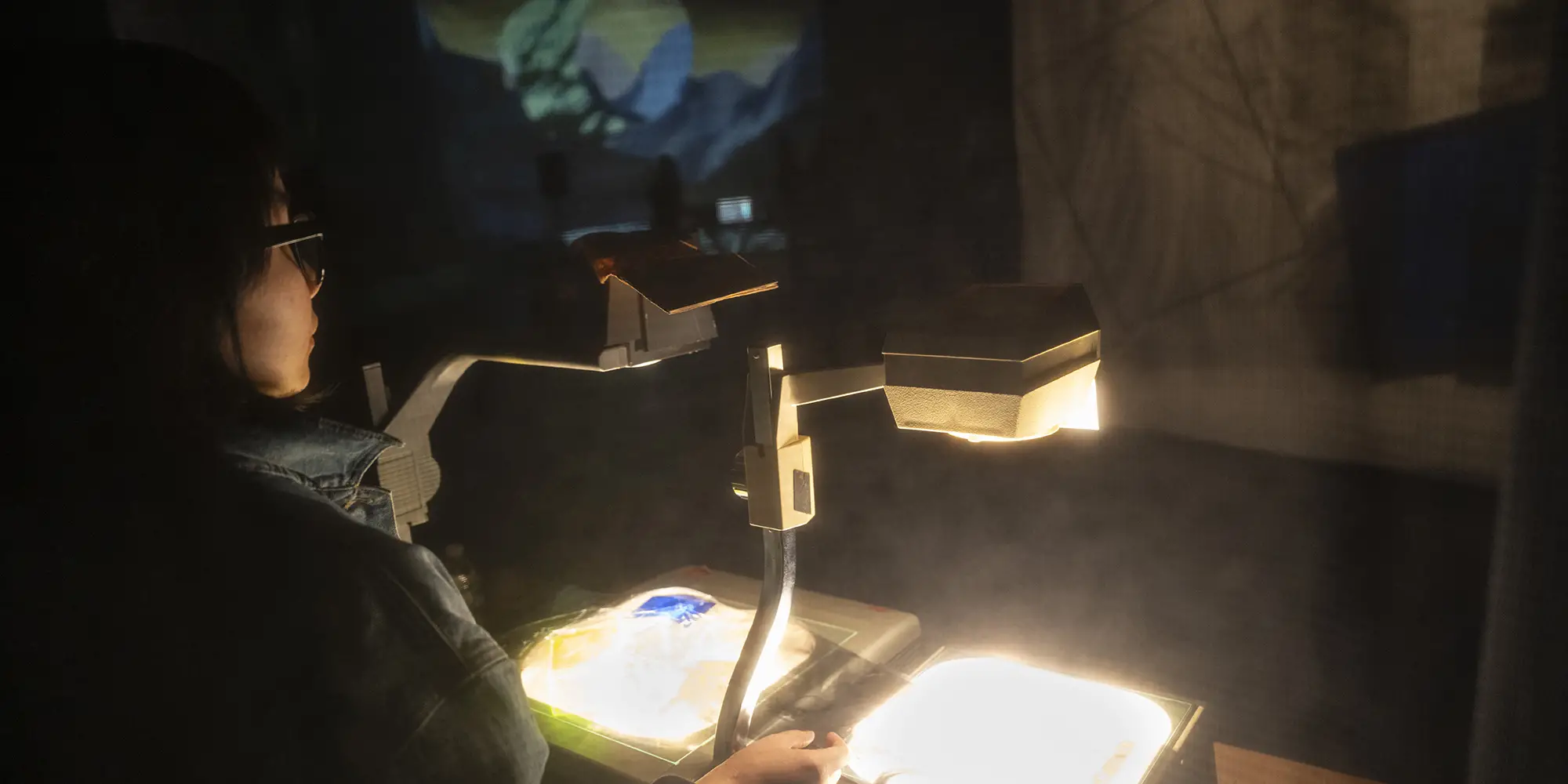
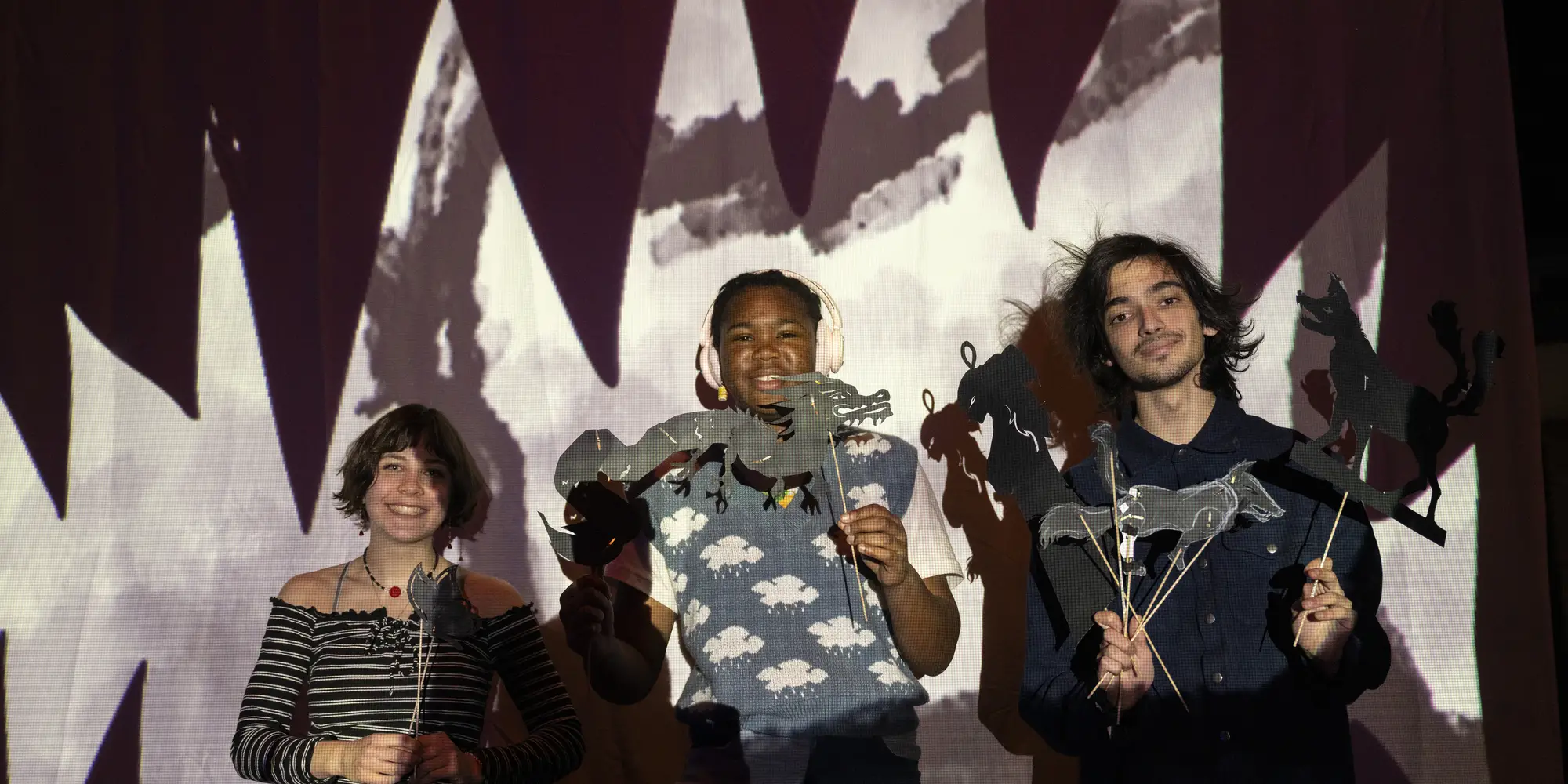
Carnegie Mellon Students Collaborate on Experimental 'Auld Lang Syne' Project
Media Inquiries
Ring in the New Year with this new take on a holiday tradition. Students from Carnegie Mellon University's Exploded Ensemble and visual art classes have collaborated across disciplines to create an experimental rendition of the classic song "Auld Lang Syne." The initiative was directed by Annie Hui-Hsin Hsieh(opens in new window) and Johannes DeYoung(opens in new window) and merges electronic music with innovative visual art techniques.
Hsieh, who directs the experimental research ensemble, posed an intriguing challenge to her students: to imagine an “exploded” version of the holiday classic "Auld Lang Syne" by deconstructing and rearranging the musical elements in innovative ways.
Her students, who are primarily electronic music majors(opens in new window), were divided into groups, each responsible for different musical attributes. One group focused on vocal lines, another on harmonic components, a third on rhythmic elements and the fourth on sound design. It was an approach that aimed to produce a distinctive arrangement reflecting the ensemble's experimental nature.
“Carnegie Mellon students are just so eager and hungry, and they work so hard. They’re also super creative,” Hsieh said.
Stepping outside comfort zones
Typically, experimental work involves seeing what the process reveals. However, in this case, Hsieh said, the holiday spirit was strongly present in the design elements.
“There’s a magic in these holiday songs that, no matter what mood you’re in that day when you listen to it, it just brings out a certain sense of joy. We wanted to give people something new, fresh and uniquely us, but we also wanted people to feel the joy and wonder that the holiday season provides,” Hsieh said.
Emma DiPrima, a first-year student majoring in electronic music, was one of four vocalists on the project. She said they worked toward a modern pop interpretation, blending inspiration from Pentatonix and Mariah Carey’s versions of the song.
"Because we’re an electronic ensemble, one of our goals is to tell a story with the sound itself,” she said. “We decided to emphasize abstract melodies rather than traditional lyrics, because this allowed us to create a fresh, atmospheric take on the classic.”
DiPrima valued the project's impact on her growth as a vocalist.
“A senior in the program, Cole Savo, designed a vocal chain, which consists of electronic processes applied to our raw vocals, that we all experimented with in real time. We took turns at the microphone, listening to a track before adding our own improvisations alongside our peers' creations,” she said. “It was definitely intense, but it taught me how fast-paced this industry can be. Working under the pressure of improvisation pushed me to adapt quickly, enhancing my creativity and confidence."
Designing an enchanted world
Meanwhile, DeYoung's art students were exploring the visual aspects of the project, which were inspired by a course he co-taught for the first time this year with Professor Gang Liu(opens in new window) in the Dietrich College of Humanities and Social Sciences(opens in new window). Drawing from traditional Chinese ghost stories and shadow play, DeYoung’s students experimented with various techniques from animation and puppetry to computational design and projection mapping.
“At the core, the students were exploring the language of expressive silhouettes and storytelling through light and shadow,” DeYoung said. “The interplay of colored light and shadow produced mesmerizing results. Traditional shadow play and contemporary computational techniques were spatialized through installations in the studio, where most of the magic happened.”
Mei Yu, a graduate student in video and media design in the School of Drama(opens in new window), used her expertise with projectors to guide the animation students on the team regarding the type of content needed based on how it would interact with the structure or surface they would be projecting onto.
“There were certain things they had to draw at different scales for cohesion,” Yu said. “My teammates were very good at creating both still images and moving animations with various techniques. It was a lot of fun and also a refreshing take on experience-making in comparison to drama, because we were not restricted to a built stage.”
The visual story they wanted to tell involved a mythical rabbit that lives on the Moon and decides to jump off it to explore the surrounding world. Once they set up shop inside the WQED studio, the project took on new levels of enchantment.
“I loved being in that huge space surrounded by creative people all focused on their work. The studio had an aura about it somehow. Once we got in there and saw the possibilities for combining the space, our imaginations and our content, it was a very satisfying moment. We were all motivated to try to bring out the best in our project and in ourselves,” Yu said.
Mastering the mix
Blaine Black, a senior majoring in electronic music who played percussion for the project, used Ableton Live digital audio workstation to mix the audio. He said his greatest challenge was unexpected reverb baked into the audio files.
“The original mix was really drenched in reverb when I got it,” he said. “Part of my job was to take that overall blurriness and make it clearer.”
Black said he could spend endless hours perfecting any project, but after a while the effort leads to diminishing returns.
“That’s just how it works. I had a time constraint to work with, like anyone in the industry would, so I wrote down all the things I had to do: clean up the vocals and compress them, which involved removing background noise, pops, breathiness or inconsistencies in volume; make the drums nice and punchy. I spent a few hours on it, and then Annie and I put the finishing touches on it together.”
Despite the tight timeline — the entire project came together within a couple of weeks — the students' creativity shone through, resulting in a festive final performance at WQED on Dec. 7 that showcased the students' creativity to the public as well as a glimpse into what’s possible through interdisciplinary collaboration at Carnegie Mellon.
Reflecting on the experience
For both Hsieh and DeYoung, the project is a testament to the creative potential of their students and the value of collaborating across disciplines. Hsieh was impressed by the students’ enthusiasm and dedication.
“Listening to the final version of the music was a magical moment that highlighted the power of collaboration and the students' ability to push the boundaries of their respective fields. They knew where this song was going and who the audience was, and it shows. It’s a wonderful reflection of their individual and collective interests," she said.
DiPrima described it as a unique experience she doesn’t think she could have gotten anywhere else.
“We receive so much one-on-one training from our professors. Studio lessons really help us learn and push us outside our comfort zones, which is something I appreciate so much,” she said. “What’s even more special about the electronic music program is its size. It’s quite small, so everyone’s pretty close with each other, no matter what year you are in. We’re like a family.”
Yu said she gained a new appreciation for the importance of effective communication.
“Recognizing and leveraging others' creative strengths can elevate the quality of our work to the next level, but it requires direct and honest communication," she said. "I had to acknowledge my own limitations. While I might have some basic knowledge of various software programs, I'm not proficient in all of them. Sharing responsibilities and clearly communicating the tasks at hand is crucial to successful collaborations. What I learned from this experience is definitely going to help me a lot in the future.”
